THE TRADITIONS OF TASTE BETWEEN VERSILIA, LUCCHESIA, SWITZERLAND PESCIATINA AND PISTOIESE
One of the aspects that most strike the traveler on foot is the constant evolution of the characteristics of the territories they cross. Language, in its accents and cadences both in Italian and in dialectal languages, is the main sign, often followed by cooking, a different expression of the same anthropological trend. It thus happens to observe, even within short distances, the changing of the terms used to indicate the same object, or state of mind: in the short stretch of path that divides a village from the other the name attributed to a plant, a flower, a bird can also vary significantly.
The phenomenon is particularly noticeable in the border regions, due to historical or cultural events, and in those which, from being overlooking the sea, creep into the countryside and then into the mountains. This is the case of the route that connects the area of Pietrasanta, in the middle of Versilia, bordering the Garfagnana and which is still affected by Ligurian influences, to the territory of Lucchesia, passing through Camaiore, then Massarosa, the Val Freddana and crossing the region of Six miles to Lucca. From here other mutations begin, affecting Switzerland Pesciatina, Collodi, the region of the spas – Montecatini and Monsummano – to end in Pistoia.
For example, one of the emblematic protagonists of this mutation is a typical Tuscan sausage that takes on slightly different names and contents depending on the area. It is a “poor” product with a very ancient tradition: it is made with what is found, all low-quality ingredients, but the result is remarkable. In Garfagnana it is called biroldo and is made with the less noble parts of the pig such as the head, lungs, heart, tongue and sometimes offal, it is eaten cut into slices and fried. In the area of Pescia, Uzzano and neighboring it is called buristo, as well as in Siena, while in the areas of Pistoia and Pisa it is called mallegato. Here the rinds and parts of the pig’s head, cooked and minced, are added fried lard and filtered blood. The mixture is flavored with aromas, sometimes raisins, and stuffed into the pig’s stomach. As a peasant fair in Lucca explained to me one day, it is a domestic product, traditionally cared for by the women of the house, each with its own particular recipe. The Tuscany Region has obtained the inclusion of biroldo among the traditional Italian food products for the following types: biroldo della Garfagnana, biroldo delle Apuane, biroldo di Lucca.
Versilia
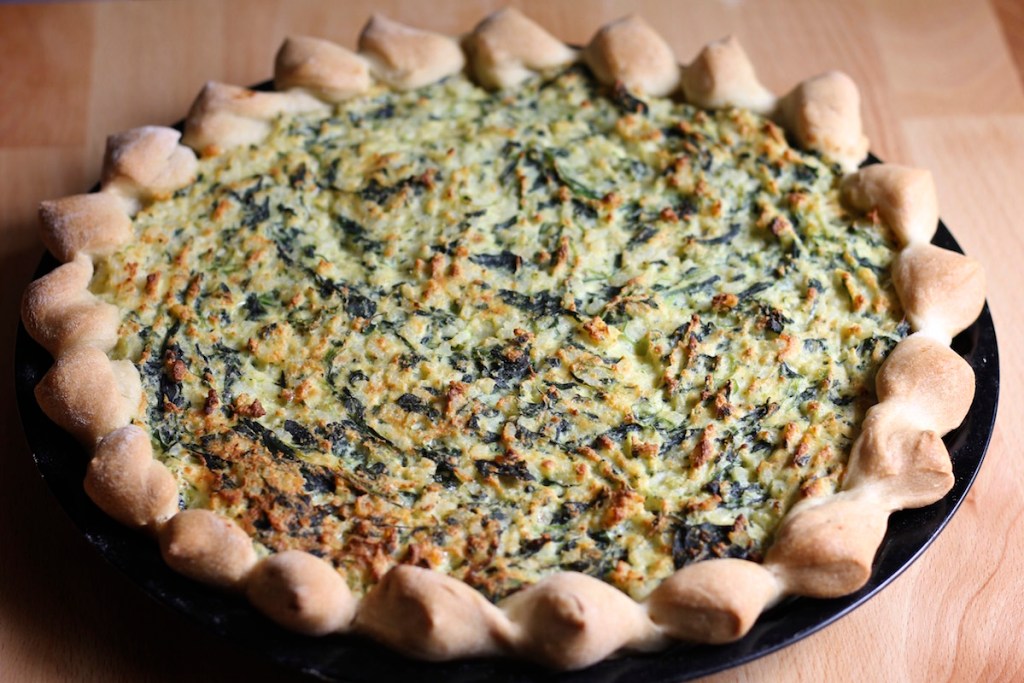 The days along these beautiful paths were enlivened by the encounter with the cooking tradition, which appeared from time to time in small surprises or in large and celebrated dishes.
The days along these beautiful paths were enlivened by the encounter with the cooking tradition, which appeared from time to time in small surprises or in large and celebrated dishes.
In the bakeries of Pietrasanta you can find fried panzanella, similar to the lunigiana sgabeo: small pieces of fried dough. Typical of this city and of Versilia in general are the dishes based on spelled and catch of the day. You can easily find sparnocchi (sea cicadas) with beans and a typical seasonal Versilian appetizer: fried acacia flowers.
In the territory of Camaiore the snack invites you to taste the typical savory pies: the Camaiore scarpaccia (bad shoe) typical of Versilia, so called because once cooked it has the thickness of the sole of an old shoe. Contains zucchini, courgette flowers, onion, flour, water, salt, pepper and oil. Otherwise, the Camaiorese pepper pie is made with a sheet of flour with oil, water, eggs, a pinch of salt, which contains boiled rice mixed with a beaten boiled chard, a little parsley, pecorino cheese, pepper, salt, beaten eggs.
The sei miglia Camaioresi
The tordelli remind us of something, a Versilian declination of national pride. Those of Camaiore have ancient origins and celebrate great occasions. They are prepared with a stuffing of beef and pork, bread softened in broth, two tablespoons of parmigiano cheese and one of pecorino cheese, two eggs, a bunch of thyme leaves, a sprig of parsley, a nice grating of nutmeg, salt, pepper. The pastry is made with eggs and a little salt. They are seasoned with a meat sauce and good cheese. Going up to Montemagno and in the region between Valpromaro and Lucca del tordello we meet the Lucchese version. The notched crescent or circular shape is very inviting but what distinguishes it is the number and association of the filling ingredients: beef and pork, mortadella, chard, pecorino cheese, parmigiano cheese, celery, garlic, breadcrumbs, nutmeg, pepper, basil. They are served with meat sauce, but also a tomato sauce or simple butter, you can’t go through here without getting to know them.
Spelled is a classic product of Garfagnana and is the star of the farro soup alla Lucchese. It has its strength in the simplicity of the ingredients: spelled, legumes, vegetables. The classic version is with beans written (borlotti) but it is also cooked with other legumes, such as chickpeas and lentils.
Potato bread is soft and naturally sweet, with its own distinctive texture. It is so good that you can also eat it on its own, soft and fragrant: it is found in Lucca and in Garfagnana, where it originates and thanks to the humidity of the potato it can be kept for many days.
Lucca
And here we meet the Lucca (and sweet) version of the cakes already encountered in Camaiore: the cake with beak, so called for the decoration of the edges in the shape of beaks. It can be found with chocolate, pears or blackberries, but the most authentic and original one is that “with herbs” or beets or even with wild herbs, an unconventional use of vegetables that the addition of pine nuts and orange peel makes amazing. There is a reason why in some bakeries they produce it in the traditional form of a donut: in the past it was customary to take it home hanging on the wrist. Buccellato, which appears as a simple “poor” sweet bread, is an ancient dessert always present in the houses of Lucca. It is a sweet bread enriched with eggs, aniseed and raisins: every baker or pastry chef in the Lucca area has his own recipe.
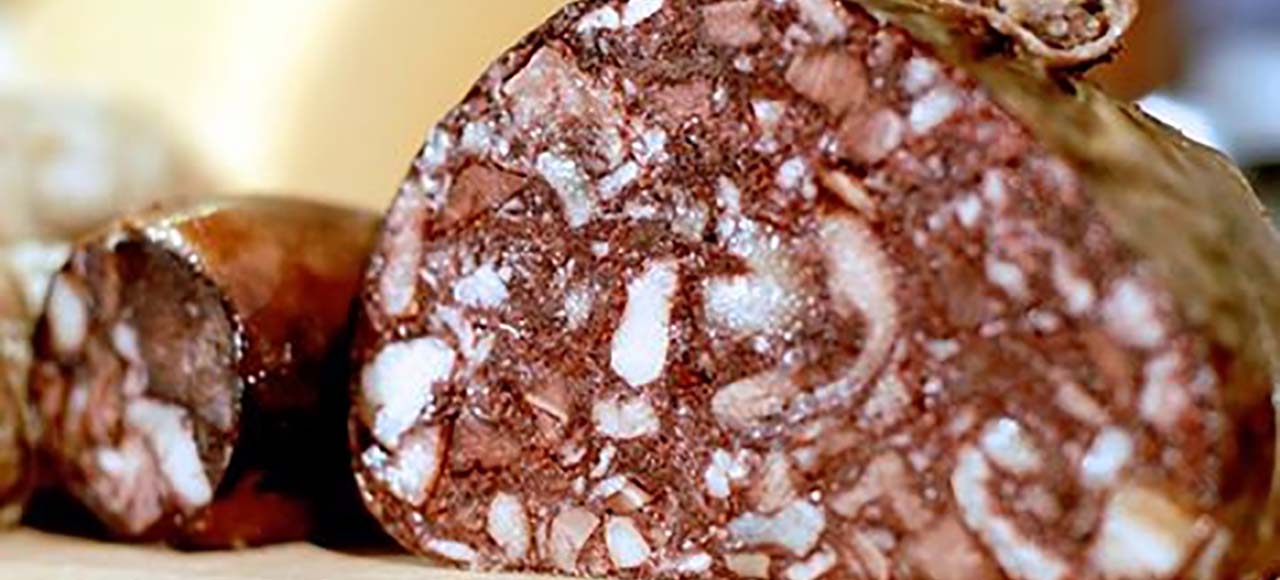 Made of simple chestnut flour and cooked between the “texts”, two iron discs with a handle that are placed over a flame, the necci appear as flat discs, similar to crepes and are traditionally served rolled up with a filling that can be simple ricotta cheese or a slice of biroldo, or, as is used in some villages of the Serchio Valley, “incicciati” or with a little sausage that is incorporated before cooking. The necci refer to another very similar dish, the testaroli, typical of the Pontremolese and Ligurian surroundings up to Sarzana la rossa, an ancient type of pasta, also produced in iron discs but of larger dimensions and with wheat flour.
Made of simple chestnut flour and cooked between the “texts”, two iron discs with a handle that are placed over a flame, the necci appear as flat discs, similar to crepes and are traditionally served rolled up with a filling that can be simple ricotta cheese or a slice of biroldo, or, as is used in some villages of the Serchio Valley, “incicciati” or with a little sausage that is incorporated before cooking. The necci refer to another very similar dish, the testaroli, typical of the Pontremolese and Ligurian surroundings up to Sarzana la rossa, an ancient type of pasta, also produced in iron discs but of larger dimensions and with wheat flour.
A pleasant encounter, demonstrating that there is a transversal cuisine that unites agricultural areas where food has always been little and cheap is the one with baccala (cod). In Lucchesia there is a long tradition of cod cooking: fried, stewed with chickpeas or with chard. During the summer it is celebrated during festivals and parties that testify to its ancient tradition.
Leaving the beautiful walls of the city of Lucca, across the pleasant plain we head to Lammari, a small village where it happens to be able to have a snack with the typical Tuscan silly bread, homemade and rovelline, breaded and fried slices of meat and ricotta in tomato sauce, capers and herbs, a “recovery” dish: when the fried slices were left over, they were used to “remake” them with what was at home.
Collodi
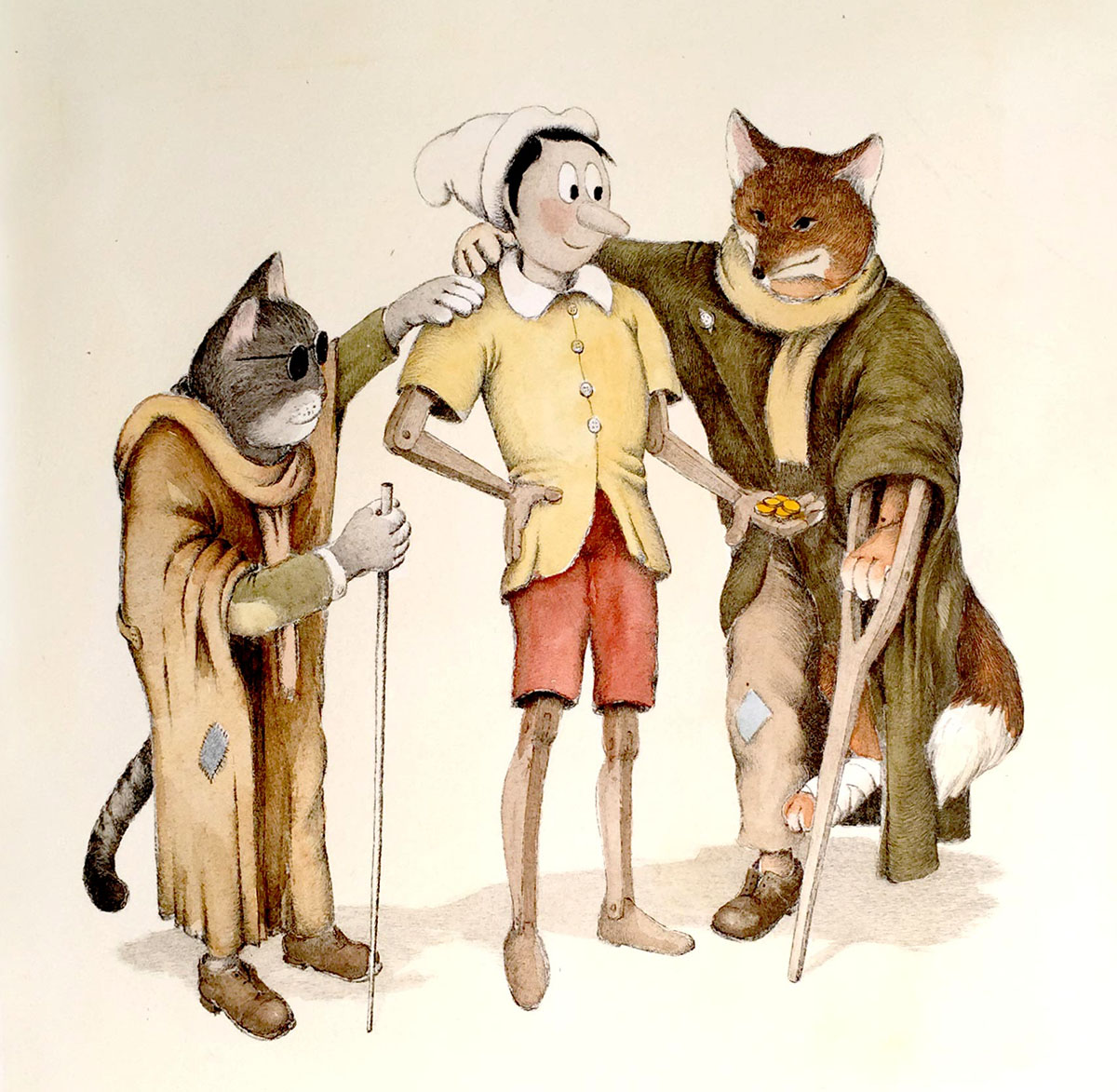 Collodi obliges to celebrate two characters and a dish. The characters are Carlo Lorenzini, author of the story of Pinocchio and Pellegrino Artusi, researcher and cornerstone of Italian cuisine; the dish, the cibreo, so ancient that it seems it was Caterina de ‘Medici, who moved to France and became queen, who exported it as she was incredibly greedy. In Chapter XIII, in the Adventures of Pinocchio, we read the puppet dinner accompanied by the Cat and the Fox at the tavern of the “Gambero Rosso”:
Collodi obliges to celebrate two characters and a dish. The characters are Carlo Lorenzini, author of the story of Pinocchio and Pellegrino Artusi, researcher and cornerstone of Italian cuisine; the dish, the cibreo, so ancient that it seems it was Caterina de ‘Medici, who moved to France and became queen, who exported it as she was incredibly greedy. In Chapter XIII, in the Adventures of Pinocchio, we read the puppet dinner accompanied by the Cat and the Fox at the tavern of the “Gambero Rosso”:
“After the hare he had a cibreine for pleasure, made by partridges, rabbits, frogs, lizards and paradisa grapes brought for his own sake; and then he wanted nothing more […] The one who ate least of all was Pinocchio“.
Carlo Collodi mentions a dish of Tuscan cuisine whose actual ingredients are chicken livers and “beans” (the attributes that make a rooster a rooster are so called!) And crests, all in egg sauce, but adding some to I play some extravagant ones like lizards and call it cibreino with an ironic diminutive compared to the abundance of the dish requested by the Fox. The origin of the name seems to be Latin, from cirbus the net that covers the intestine or, again in Latin, from bird entrails, while some cookbooks refer to the term zingibereus of Arabic origin. Treccani attributes it, with the addition of “probable”, to the old French civé, from onion. It is an ancient Tuscan dish of reuse of the less noble parts of poultry. Today reduced to a historical artifact, it was much appreciated by Pellegrino Artusi (a famous Italian gastronome) who described its preparation and characteristics as follows:
“Cibreo is a simple but delicate and gentle sauce, suitable for ladies with listless stomachs and convalescents. Take chicken livers (removing the gall bladder) crests and beans; peel the crests with boiling water, cut them into two or three pieces and the livers in two. Put on the fire in proportion, first the crests, then the livers and finally the beans and season with salt and pepper, then broth if necessary to cook these things. According to the quantity, put in a saucepan a red or two of eggs, with a teaspoon, or a half only, of flour, lemon sour and boiling broth, blending so that the egg does not go crazy. Pour this sauce into the giblets when they are cooked, boil a little and add more broth, if necessary, to make it melt, and serve. For three or four ridges, as many livers and six or seven beans, a portion sufficient for one person, an egg yolk, half a teaspoon of flour and half a lemon is enough “. In Collodi, on the occasion of the feast of San Bartolomeo, patron saint of the town, it is customary to serve and exchange cakes with beaks, not only with “herbs” but also with rice and chocolate.
Pescia and surroundings
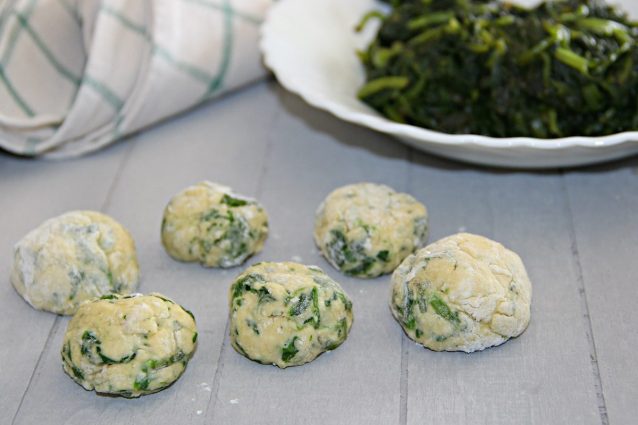 A short journey separates us from Pescia, where tradition in the kitchen adds and takes away from everyday foods to give its mark. The cioncia is the most important typical dish, “poor dish” is a stew of the calloused parts of the calf’s face, nose, cheek as well as the tail, which are prepared with vegetables and tomato, with added chilli and basil. It owes its name to the tanneries that in ancient times formed the economic fabric of the city. The waste parts of the calves, not useful for the production of skins, were degreased and used thanks to the imagination aroused by need and hunger, typically popular. Today it has become a classic dish representative of the territory and is also called trippe alla pesciatina.
A short journey separates us from Pescia, where tradition in the kitchen adds and takes away from everyday foods to give its mark. The cioncia is the most important typical dish, “poor dish” is a stew of the calloused parts of the calf’s face, nose, cheek as well as the tail, which are prepared with vegetables and tomato, with added chilli and basil. It owes its name to the tanneries that in ancient times formed the economic fabric of the city. The waste parts of the calves, not useful for the production of skins, were degreased and used thanks to the imagination aroused by need and hunger, typically popular. Today it has become a classic dish representative of the territory and is also called trippe alla pesciatina.
A first course that recalls the peasant past, very common in Pescia and in the Valdinievole, are the gnudi (balls of ricotta and chard) which are served with bechamel, parmigiano cheese or pecorino cheese and butter.
Used in many dishes, the beans that take their name from the village of Sorana, one of the ten castellas of Switzerland Pesciatina, the mountain north of Pescia. The pride of the Pescia area is defined as a “product of health” and comes in two types: white and red. They are a Slow Food Presidium and are cooked with garlic, sage, pepper and oil, accompanied by meat, roast pork or grilled steak and liver. Typical and original preparation are beans al fiasco (in old typical bottle).
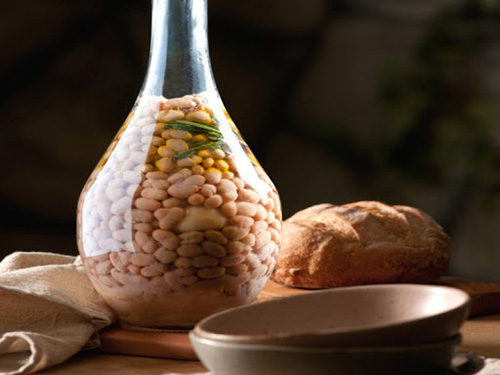 Thanks to the chestnut woods of which the Pesciatina mountain is rich, there is a great production of an excellent autumn fruit. Here also called “the bread of the poor”, chestnuts have always been an important and varied nourishment. The necci are born from chestnut flour and are prepared with flour, water, salt and… the irons we have already mentioned. Once cooked, the necci are filled with ricotta and rolled up like cannoli.
Thanks to the chestnut woods of which the Pesciatina mountain is rich, there is a great production of an excellent autumn fruit. Here also called “the bread of the poor”, chestnuts have always been an important and varied nourishment. The necci are born from chestnut flour and are prepared with flour, water, salt and… the irons we have already mentioned. Once cooked, the necci are filled with ricotta and rolled up like cannoli.
We realize that we have approached, step by step, the area of Florentine influence; we meet the sandwich with the lampredotto, a delicacy always present in the markets and in the streets of Florence. This popular Tuscan excellence is simply one of the stomachs of cattle, and is part of what in Tuscany is called the fifth quarter, that is, the entrails. Poor dishes of common origin which today are rightly appreciated. Lampredotto is boiled with celery, carrot, onion, tomato and is mainly eaten in sandwiches, soaked in cooking broth and seasoned with salt and pepper or with green sauce. It also finds good use in the kitchen, in zimino with beets, or even as a base for a sauce.
Still in Pescia we find the local declination of an old friend, the mallegato. The hot dough is stuffed into the pig’s stomach and is subsequently sewn. Over time, the sausage will take on a delicate and sweetish flavor, with a very particular taste.
The Prato area is also approaching and we begin to be able to conclude our dinner with good cantucci, dry biscuits with almonds inside, excellent savored dipped, even dipping your finger into the Vin Santo.
Montecatini and Monsummano
From Pescia to Montecatini and Monsummano the path is short: we are in the thermal area and those who are “passing the waters” enjoy a lot of free time. It seems that here we have worked hard to entertain the many guests gently. The Montecatini cialda is a singular product, not a biscuit or even a wafer; it can hardly be compared to another dessert. Free of butter and other fats and stuffed only with Apulian almond, it is the result of a complex process, which involves two cooking times. At the same time compact and crumbly and with the typical bitter aftertaste of almond, it goes well with ice cream, tea and even a glass of passito.
Pistoia
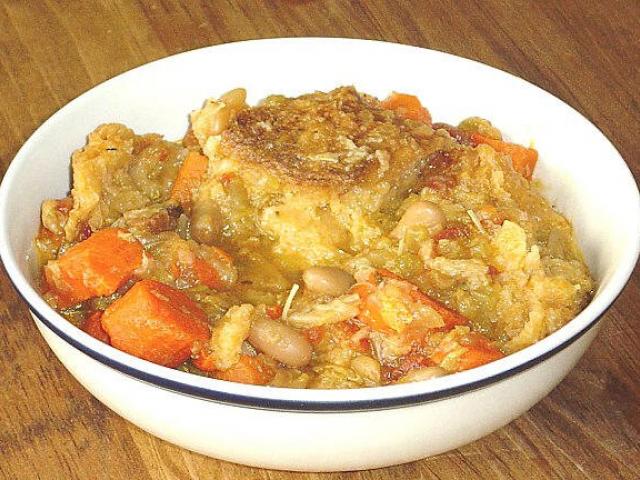 Pistoia offers two excellent products which are oil and wine, and a dish for strong stomachs that bears the name zuppa del carcerato (soup of prisoner), a soup made with stale bread, veal entrails and a sprinkling of cheese. The name derives from the fact that it was a dish cooked for the prisoners of the Pistoia prison, in the past as today near the slaughterhouses of the city.
Pistoia offers two excellent products which are oil and wine, and a dish for strong stomachs that bears the name zuppa del carcerato (soup of prisoner), a soup made with stale bread, veal entrails and a sprinkling of cheese. The name derives from the fact that it was a dish cooked for the prisoners of the Pistoia prison, in the past as today near the slaughterhouses of the city.
Farinata with alloys from Pistoia is a delicacy of poor cuisine. The alloys are nothing more than strips of black cabbage, while the farinata is based on corn. It is the local interpretation of the infarinata Garfagnina, a delicious middle ground between a polenta and a soup that changes name and some characteristics depending on the place: in Pietrasanta it is called intruglia, while in Garfagnana it becomes incavolata.
Pellegrino Artusi would have defined them: “a tiny toy”, they are the brigidini of Lamporecchio, very thin and crunchy biscuits, with an intense flavor of anise, perfect to eat while walking among stalls and rides in village festivals.